1. Rutherford RM, Fisher AJ, Hilton C, Forty J, Hasan A, Gould FK, et al. Functional status and quality of life in patients surviving 10 years after lung transplantation. Am J Transplant. 2005; 5:1099–1104. PMID:
15816892.

2. Chambers DC, Yusen RD, Cherikh WS, Goldfarb SB, Kucheryavaya AY, Khusch K, et al. The Registry of the International Society for Heart and Lung Transplantation: Thirty-fourth Adult Lung And Heart-Lung Transplantation Report-2017; Focus Theme: Allograft ischemic time. J Heart Lung Transplant. 2017; 36:1047–1059. PMID:
28784324.

3. Morris PJ. Transplantation: a medical miracle of the 20th century. N Engl J Med. 2004; 351:2678–2680. PMID:
15616201.
4. Waki K. UNOS Liver Registry: ten year survivals. Clin Transpl. 2006; 29–39. PMID:
18368704.
5. Verleden GM, Vos R, Vanaudenaerde B, Dupont L, Yserbyt J, Van Raemdonck D, et al. Current views on chronic rejection after lung transplantation. Transpl Int. 2015; 28:1131–1139. PMID:
25857869.

6. Korean Network for Organ Sharing. National data for organ transplantation [Internet]. Seoul: Korean Network for Organ Sharing;2019. cited 2019 May 7. Available from:
https://www.konos.go.kr/konosis/index.jsp.
7. Cho EN, Haam SJ, Kim SY, Chang YS, Paik HC. Anastomotic airway complications after lung transplantation. Yonsei Med J. 2015; 56:1372–1378. PMID:
26256982.

8. Yun JH, Lee SO, Jo KW, Choi SH, Lee J, Chae EJ, et al. Infections after lung transplantation: time of occurrence, sites, and microbiologic etiologies. Korean J Intern Med. 2015; 30:506–514. PMID:
26161017.

9. Lee SH, Park MS, Song JH, Kim YS, Lee JG, Paik HC, et al. Perioperative factors associated with 1-year mortality after lung transplantation: a single-center experience in Korea. J Thorac Dis. 2017; 9:4006–4016. PMID:
29268411.

10. Jeong YH, Choi S, Park SI, Kim DK. Asan Medical Center Lung Transplantation Team. Clinical outcomes of lung transplantation: experience at Asan Medical Center. Korean J Thorac Cardiovasc Surg. 2018; 51:22–28. PMID:
29430425.

11. Verleden GM, Raghu G, Meyer KC, Glanville AR, Corris P. A new classification system for chronic lung allograft dysfunction. J Heart Lung Transplant. 2014; 33:127–133. PMID:
24374027.

12. Verleden SE, Ruttens D, Vandermeulen E, Bellon H, Van Raemdonck DE, Dupont LJ, et al. Restrictive chronic lung allograft dysfunction: where are we now? J Heart Lung Transplant. 2015; 34:625–630. PMID:
25577564.

13. Vos R, Verleden SE, Verleden GM. Chronic lung allograft dysfunction: evolving practice. Curr Opin Organ Transplant. 2015; 20:483–491. PMID:
26262458.
14. Patti MG, Vela MF, Odell DD, Richter JE, Fisichella PM, Vaezi MF. The intersection of GERD, aspiration, and lung transplantation. J Laparoendosc Adv Surg Tech A. 2016; 26:501–505. PMID:
27218671.

15. Basseri B, Conklin JL, Pimentel M, Tabrizi R, Phillips EH, Simsir SA, et al. Esophageal motor dysfunction and gastroesophageal reflux are prevalent in lung transplant candidates. Ann Thorac Surg. 2010; 90:1630–1636. PMID:
20971278.

16. Vos R, Vanaudenaerde BM, Verleden SE, De Vleeschauwer SI, Willems-Widyastuti A, Van Raemdonck DE, et al. A randomised controlled trial of azithromycin to prevent chronic rejection after lung transplantation. Eur Respir J. 2011; 37:164–172. PMID:
20562124.

17. Kim WY, Hong SB. Humidifier disinfectant-associated lung injury: six years after the tragic event. Tuberc Respir Dis. 2017; 80:351–357.

19. Schaffer JM, Singh SK, Reitz BA, Zamanian RT, Mallidi HR. Single- vs double-lung transplantation in patients with chronic obstructive pulmonary disease and idiopathic pulmonary fibrosis since the implementation of lung allocation based on medical need. JAMA. 2015; 313:936–948. PMID:
25734735.

20. Puri V, Patterson GA, Meyers BF. Single versus bilateral lung transplantation: do guidelines exist? Thorac Surg Clin. 2015; 25:47–54. PMID:
25430429.
21. George TJ, Arnaoutakis GJ, Beaty CA, Pipeling MR, Merlo CA, Conte JV, et al. Acute kidney injury increases mortality after lung transplantation. Ann Thorac Surg. 2012; 94:185–192. PMID:
22325467.

22. Arnaoutakis GJ, George TJ, Robinson CW, Gibbs KW, Orens JB, Merlo CA, et al. Severe acute kidney injury according to the RIFLE (risk, injury, failure, loss, end stage) criteria affects mortality in lung transplantation. J Heart Lung Transplant. 2011; 30:1161–1168. PMID:
21620737.

23. Jayarajan SN, Taghavi S, Komaroff E, Brann S, Horai T, Cordova F, et al. Impact of extracorporeal membrane oxygenation or mechanical ventilation as bridge to combined heart-lung transplantation on short-term and long-term survival. Transplantation. 2014; 97:111–115. PMID:
24056630.

24. Crotti S, Iotti GA, Lissoni A, Belliato M, Zanierato M, Chierichetti M, et al. Organ allocation waiting time during extracorporeal bridge to lung transplant affects outcomes. Chest. 2013; 144:1018–1025. PMID:
23599162.

25. Hayanga AJ, Du AL, Joubert K, Tuft M, Baird R, Pilewski J, et al. Mechanical ventilation and extracorporeal membrane oxygenation as a bridging strategy to lung transplantation: significant gains in survival. Am J Transplant. 2018; 18:125–135. PMID:
28695576.

26. George TJ, Beaty CA, Kilic A, Shah PD, Merlo CA, Shah AS. Outcomes and temporal trends among high-risk patients after lung transplantation in the United States. J Heart Lung Transplant. 2012; 31:1182–1191. PMID:
22885156.

27. Verleden SE, Sacreas A, Vos R, Vanaudenaerde BM, Verleden GM. Advances in understanding bronchiolitis obliterans after lung transplantation. Chest. 2016; 150:219–225. PMID:
27212132.

28. Yusen RD, Christie JD, Edwards LB, Kucheryavaya AY, Benden C, Dipchand AI, et al. The Registry of the International Society for Heart and Lung Transplantation: Thirtieth Adult Lung and Heart-Lung Transplant Report, 2013; focus theme: age. J Heart Lung Transplant. 2013; 32:965–978. PMID:
24054805.
29. Bloom RD, Doyle AM. Kidney disease after heart and lung transplantation. Am J Transplant. 2006; 6:671–679. PMID:
16539623.

30. Floreth T, Bhorade SM, Ahya VN. Conventional and novel approaches to immunosuppression. Clin Chest Med. 2011; 32:265–277. PMID:
21511089.

31. Scheffert JL, Raza K. Immunosuppression in lung transplantation. J Thorac Dis. 2014; 6:1039–1053. PMID:
25132971.
32. Shitrit D, Rahamimov R, Gidon S, Bakal I, Bargil-Shitrit A, Milton S, et al. Use of sirolimus and low-dose calcineurin inhibitor in lung transplant recipients with renal impairment: results of a controlled pilot study. Kidney Int. 2005; 67:1471–1475. PMID:
15780099.

33. Gullestad L, Iversen M, Mortensen SA, Eiskjaer H, Riise GC, Mared L, et al. Everolimus with reduced calcineurin inhibitor in thoracic transplant recipients with renal dysfunction: a multicenter, randomized trial. Transplantation. 2010; 89:864–872. PMID:
20061999.

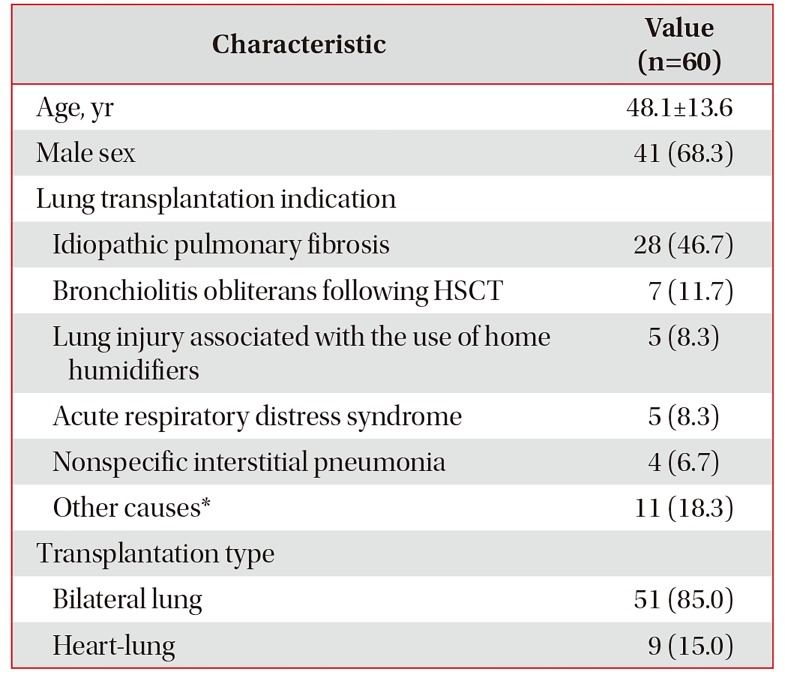
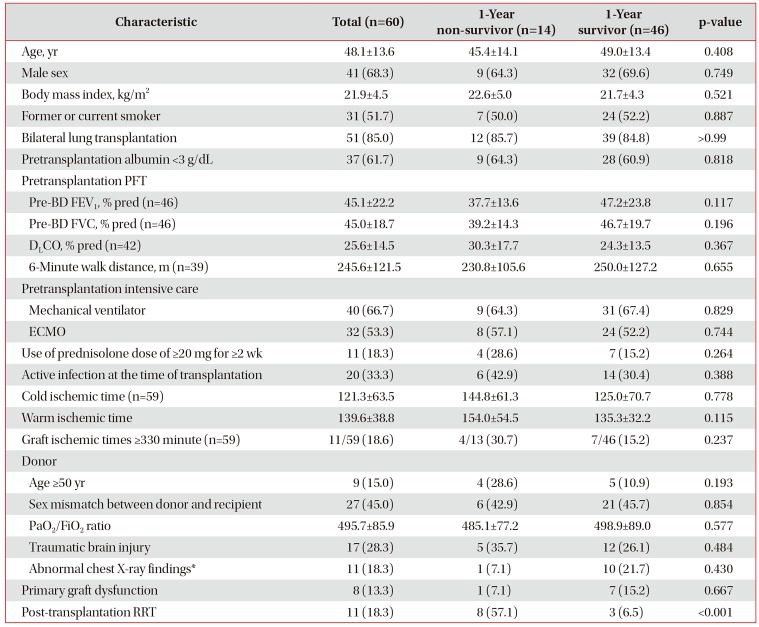
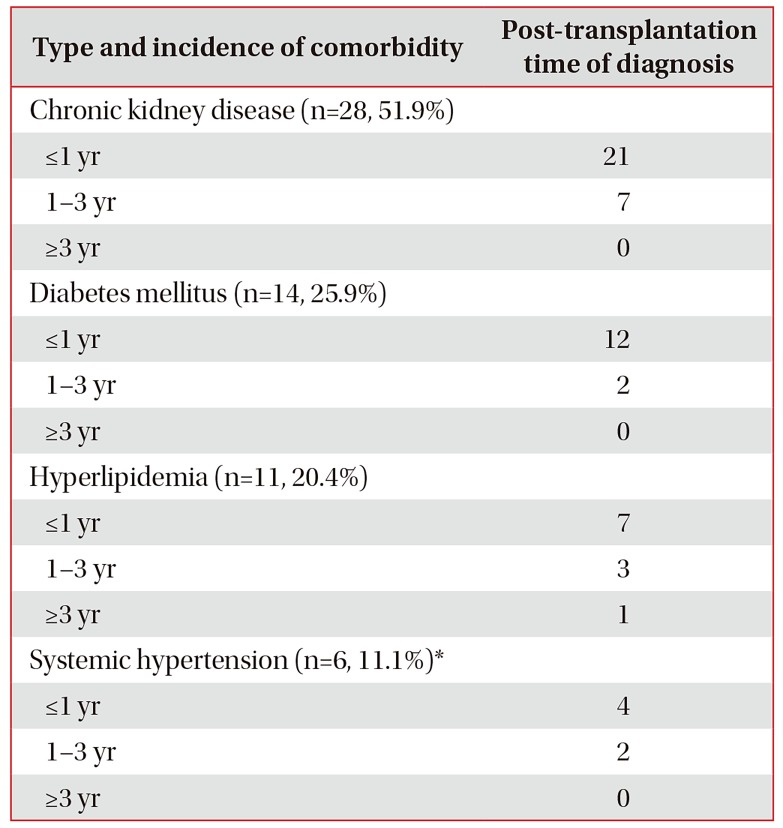




 PDF
PDF ePub
ePub Citation
Citation Print
Print



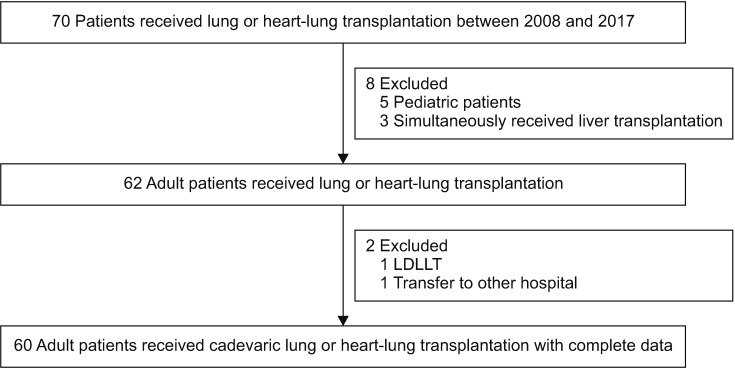
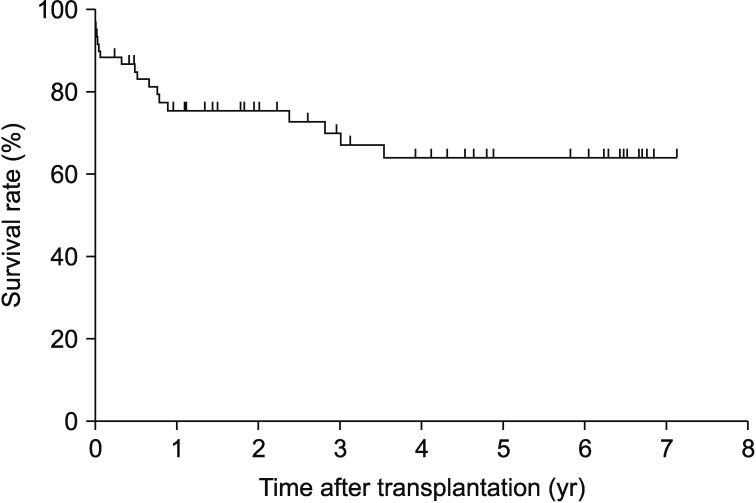
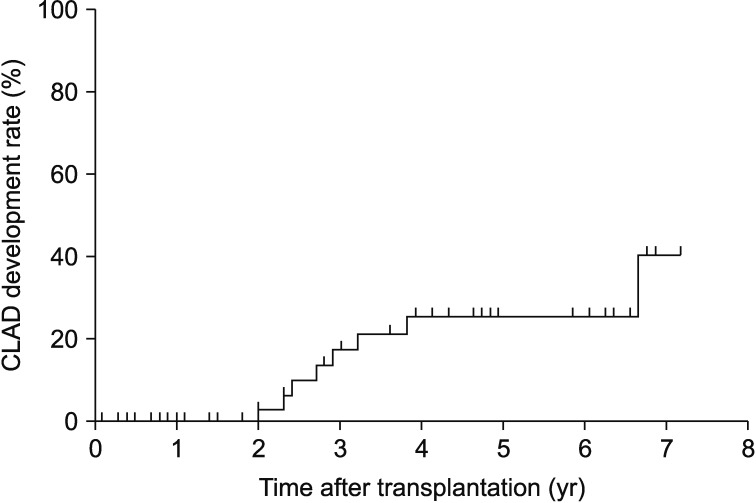
 XML Download
XML Download